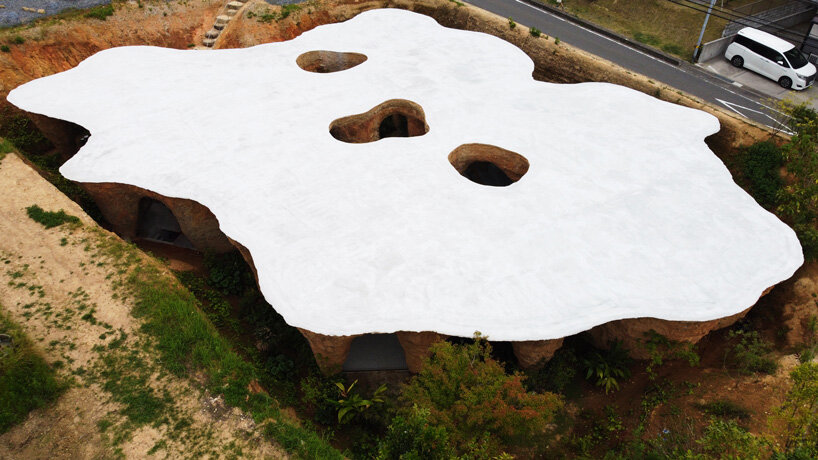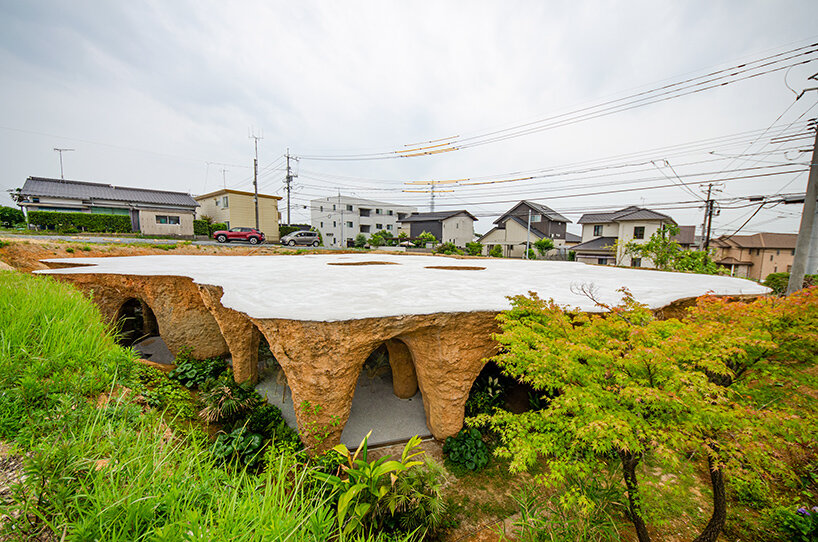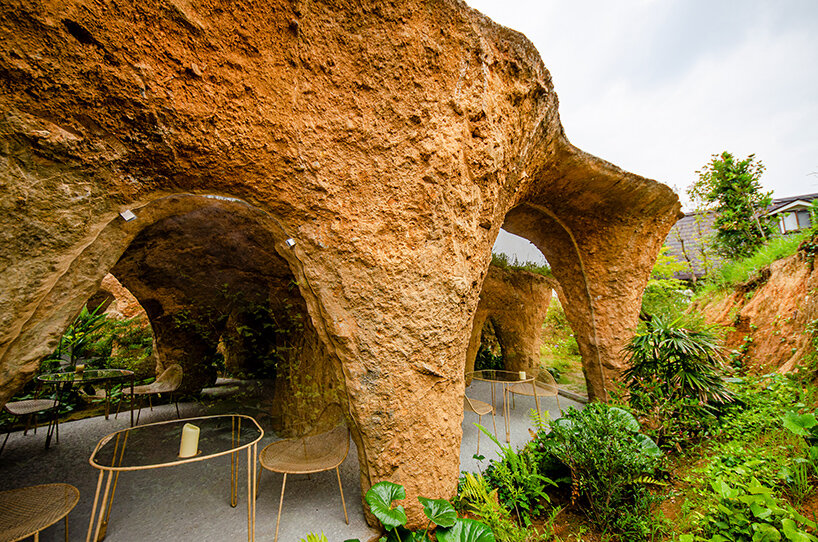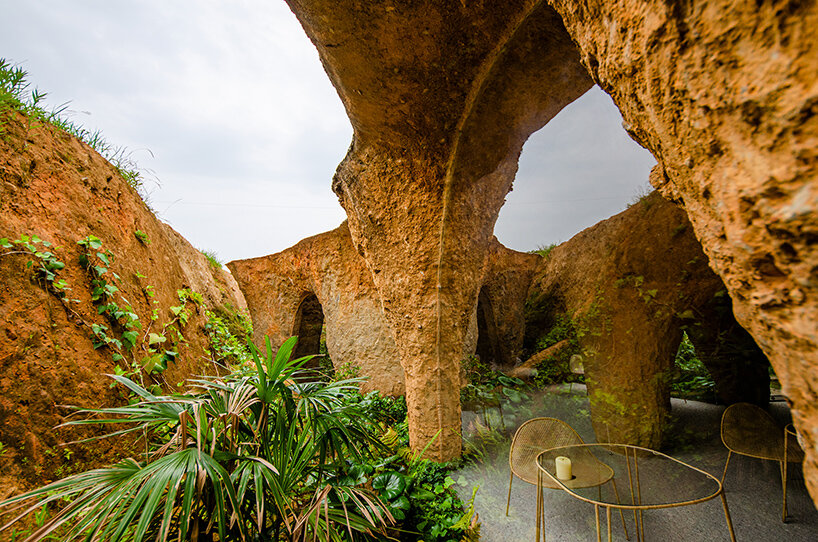junya ishigami completes cavernous house and restaurant in yamaguchi, japan
learning from the earth
Junya Ishigami and his team celebrate the completion of ‘House & Restaurant‘ in the Japanese city of Yamaguchi. The sculptural work of architecture suggests a naturally eroded landform, recalling the tunnels and rocky vaulting of subterranean caves, and expressing the familiar quality of roughness found in nature.
In many ways these organic characteristics can be seen across the architect’s larger body of work — with the charred timber canopy which tops his Kokage-Gumo Pavilion, and with the undulating earthwork which shapes his Art Biotop Water Garden. In Thailand he introduced a Rainbow Carpet, whose thin brick veil is punctured by a series of large, carved openings. One of the most experimental Japanese architects of his generation, his poetic visions often seemed too radical to be realized, rendering those completed projects all the more fantastic.
Upon completion of the House & Restaurant in Yamaguchi, Junya Ishigami, who received the golden madonnina trophy of Milan’s THE DESIGN PRIZE 2021-22, shares with designboom an in-depth account of the design process. all images © Junya.Ishigami+Associates, unless otherwise stated | header © Yashiro Photo Office
all images © Junya.Ishigami+Associates, unless otherwise stated | header © Yashiro Photo Office
raw and organic: junya ishigami’s excavation
This latest project by Junya Ishigami for a French restaurant owner now stands as an harmonious blend of a fine restaurant and a welcoming family home. The raw surfaces of the excavated space reflect the authenticity of the cuisine — this dialogue was a truly intentional, even while the unusual construction process uncovered new discoveries.
The architect elaborates: ‘The project is a residence/restaurant for a French restaurant owner. He is an old friend of mine, and he was the one who commissioned the Tables for a Restaurant. I was asked to design a building as ‘heavy’ as possible. ‘I want an architecture whose heaviness would increase with time,’ he said. ‘It cannot be artificially smooth but rather something with the roughness of nature. Authentic cuisines require such a place.’
‘He also told me that ‘it has to look as if it has been there and will continue to be there for the longest time.’ His idea was to create a brand-new long-established restaurant.’

a welcoming space for dining and living
Junya Ishigami describes the programmatic balance between house and restaurant, according to the wishes of the client: ‘He was longing for something that is both a house and a restaurant, something he could pass on to his children and grandchildren. Now, he invites guests to the restaurant as he would invite friends to his house, and with someone special, he would let them into the living room or even stay overnight.’
‘When the restaurant is closed, the hall serves as a place for the family to spend time or for the children to study. The plan is arranged with the restaurant on the north and the residence on the south. To go back and forth between the spaces, they can walk through any one of the three courtyards that separate them.’
 3D data was generated from a mass model, then the mold was dug manually
3D data was generated from a mass model, then the mold was dug manually
unearthing the inverted landscape
Although the final result of Junya Ishigami’s House & Restaurant appears as a naturally-occurring cave, the process of sculpting and building the space was methodical — with many moments of exploration. The result is an inverted landscape, carved in part by nature.
Describing the construction of the project, the architect writes: ‘In terms of construction, we conceived a process of constantly sharing, accepting, and referencing the un-precisions and accidents that occurred on the site to create an architecture that internalizes natural distortions and uncertainties.
‘More specifically, we dug a hole in the ground to pour concrete, excavated the volume, and fixed glasses to create interior space.’

the team dug a hole in the ground to pour concrete, excavated the volume, and fixed glass to create interior space
The precise design
‘First, a mass model that went through countless modifications was converted into 3D data. The 3D coordinate data was then input into a total station (TS) survey instrument to determine the points utilizing a navigation system for pile driving. At the same time, construction workers dug the hole manually for precision while constantly confirming the position and shape on an iPad. Unexpected factors such as growing grass, soil collapsing, or errors due to manual labor were tolerated as much as possible.’
‘When the structure was excavated after concrete solidification, it was caked with mud. With the range in geology, the nature and appearance of the soil differed from place to place. We originally planned to wash away the dirt to reveal a gray concrete structure. However, we were impressed by how it looked with soil that we decided to leave it as it is. It was then that we sensed the atmosphere of a cave and decided to redesign the building with a new image.’


